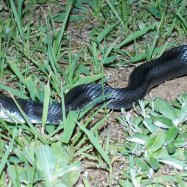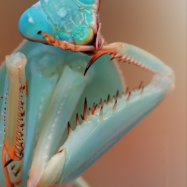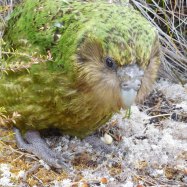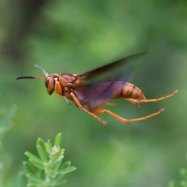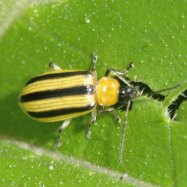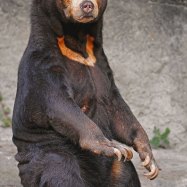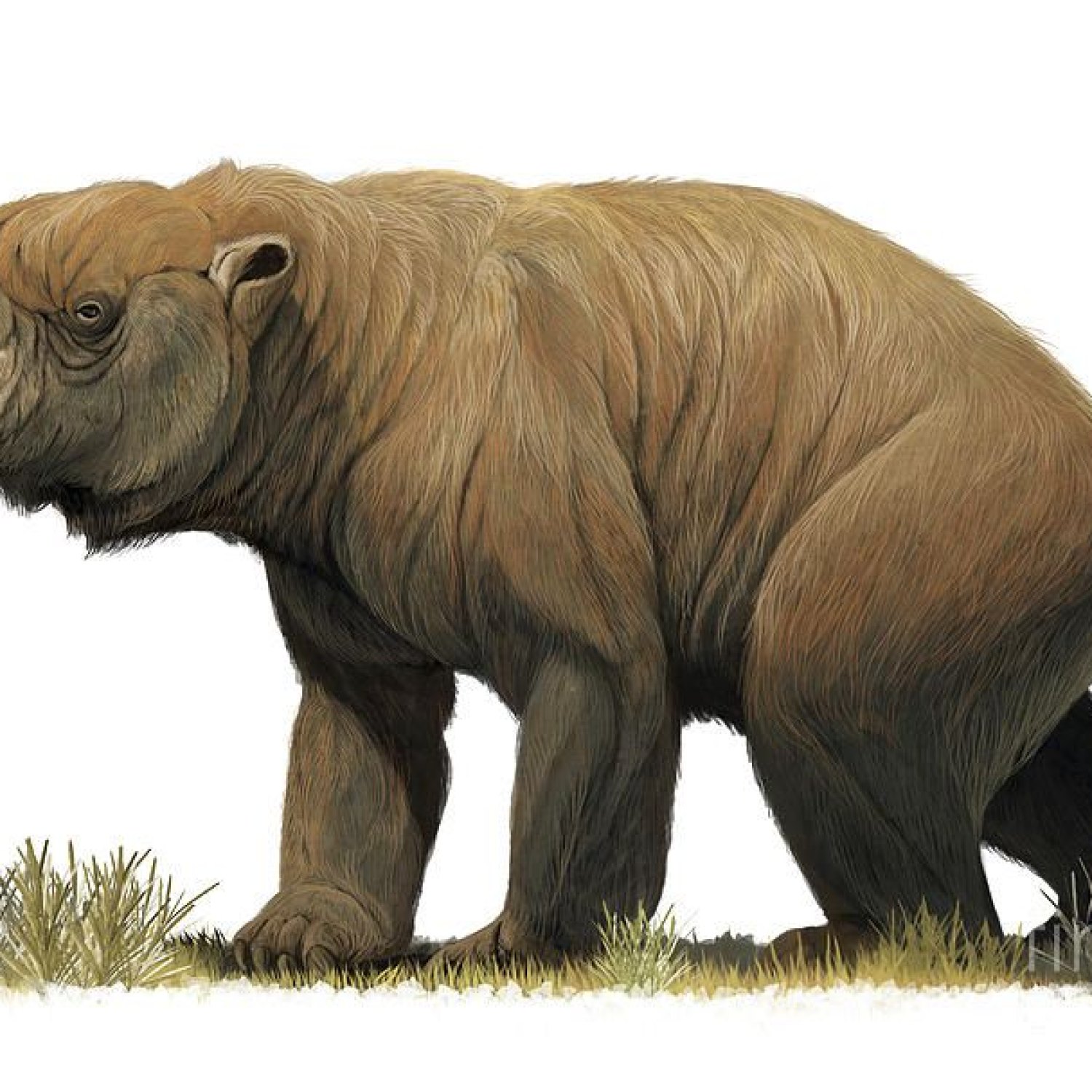
Diprotodon
Up to 3 meters (10 feet)
Diprotodon is a fascinating creature from the Diprotodontidae family, known for its heavy and robust body shape. With a length of up to 3 meters, it is one of the largest marsupials to roam the Earth. Found in Eastern, Northern, and Southern Australia, this animal is a testament to the diverse wildlife of the continent. #Diprotodon #AustralianMarsupials #GiantMarsupials
Animal Details Summary:
Common Name: Diprotodon
Kingdom: Animalia
Habitat: Open forests, woodlands, and grasslands
The Fascinating World of the Diprotodon: Australia's Enigmatic Giant
Australia is known for its unique and diverse range of wildlife, from the cuddly koalas to the fierce kangaroos. However, hidden among the vast and rugged terrain of this continent, there once roamed a giant creature that has captured the imaginations of scientists and animal lovers alike. This creature is none other than Diprotodon, the largest marsupial known to have ever existed.Diprotodon, whose name means "two forward teeth," is a scientific name that evokes its most distinctive feature Diprotodon. This prehistoric creature had a pair of oversized incisors which it used for stripping bark and other vegetation. With its estimated weight of up to three tons, it is no wonder that it needed such strong teeth to sustain its massive body.
This magnificent animal belonged to the family Diprotodontidae, which includes other well-known Australian animals such as kangaroos and wallabies. However, what makes Diprotodon stand out is its size, for it was the largest of all marsupials. Its closest living relative is the wombat, but even the largest species of wombat is just a fraction of the size of Diprotodon.
The Classification and Habitat of Diprotodon
Diprotodon belongs to the kingdom Animalia, phylum Chordata, and class Mammalia. It falls under the order Diprotodontia, which is an order of herbivorous marsupials that includes wombats, koalas and possums. The name of this order, "diprotodon," is derived from the Greek words di, meaning "two," and protos, meaning "first" or "foremost." This name alludes to the animal's two front incisors, which were its most pronounced feature Darkling Beetle.The Diprotodon was widely distributed across the continent of Australia, inhabiting various environments, including open forests, woodlands, and grasslands. Fossil evidence suggests that they were most prevalent in the eastern, northern, and southern parts of Australia, although they have also been found in the central regions. This wide distribution is a testament to the adaptability and resilience of this incredible creature.
The Diet of the Diprotodon
As mentioned earlier, Diprotodon was a herbivorous animal, which means that it primarily fed on plants. Through their unique and specialized dental structure, these creatures were able to strip bark, branches, and other vegetation, making them well-suited for their environment. They were also adept at using their large, powerful claws to dig up roots and tubers from the ground. With a diet that consisted mainly of plant material, it is no wonder that their remains have been predominantly found in areas with rich plant fossils, giving us a better understanding of the ecosystem they inhabited.The Appearance of Diprotodon
When you think of prehistoric animals, images of fierce and terrifying beasts may come to mind. However, Diprotodon was a peaceful and gentle creature, despite its large size. Its appearance was more akin to a modern-day rhinoceros, with its heavy and robust body and two short and powerful legs. Its fur was thick and coarse, ranging in color from grey to brown. This coloration allowed it to blend in with its surroundings, providing excellent camouflage.To sustain their large bodies, Diprotodon needed to consume a significant amount of food daily. As a result, they had a large gut that was necessary for digesting tough vegetation. Fossil evidence suggests that these animals had an incredibly robust rib cage, which may have housed a powerful set of lungs to support their large mass.
The Size of Diprotodon
Diprotodon was an impressive creature, with an estimated length of up to 3 meters (10 feet). Its tail alone could measure up to 1 meter in length. This size made it one of the largest quadrupedal mammals known to have existed. To put that into perspective, the largest living terrestrial mammal is the African elephant, which has an average length of 5.5 meters (18 feet). Diprotodon was a giant compared to even this colossal creature.The Mystery of Diprotodon's Extinction
As with many extinct animals, the exact reason for Diprotodon's extinction remains a mystery. Fossil evidence suggests that their population began to decline around 25,000 years ago, and by 10,000 years ago, they had vanished entirely from the Australian continent. While there is no definitive explanation, several theories have been proposed.One theory suggests that the arrival of humans in Australia caused the decline of Diprotodon. The arrival of humans would have brought competition for resources, as well as potential predation from humans hunting for food. Another theory suggests that climate change, such as the shift from a more temperate climate to a drier one, may have led to the decline and eventual extinction of these animals.
The Legacy of Diprotodon
Diprotodon may have been extinct for thousands of years, but its legacy lives on. Their remains have been found throughout Australia, providing scientists with a wealth of information about this magnificent creature. They have also captured the public's imagination, with their imposing size and incredible features.Their impact on the ecosystem was also significant, as they were herbivores that fed on vegetation, affecting the growth and distribution of plants. With their extinction, a significant change may have occurred in the ecosystem, affecting other plant and animal species.
In addition to their physical remains, Diprotodon has also left its mark on modern-day culture. The animal has been featured in various forms of media, from literature to video games, and even has a street named after it in the capital of the Australian Capital Territory, Canberra.
The Importance of Studying Extinct Animals
The study of extinct animals, such as Diprotodon, is crucial in understanding the Earth's history and the evolution of life. Fossil evidence allows scientists to uncover clues about the environment, the ecosystem, and the animals that once roamed the Earth. Through this, we gain a better understanding of the past, which can then inform our understanding of the present and future.Additionally, studying extinct animals also highlights the impact of human activities on our planet and its inhabitants. The decline and extinction of many species have been linked to human activities, such as hunting and habitat destruction. By studying and preserving these animals, we can learn from past mistakes and work towards a more sustainable future.
The Fascinating World of Extinct Animals
Diprotodon is just one of the incredible extinct animals that once graced our planet. From the ferocious tyrannosaurus rex to the gentle giant mammoths, these creatures fascinate and captivate us. Through their remains and the information they hold, we can continue to learn about and appreciate the incredible diversity of life on Earth.As we unravel more secrets and mysteries of our planet's past, we can continue to marvel at the wonders of the natural world, and perhaps, gain a better understanding of our place in it. And who knows, maybe one day, through advancements in science and technology, we may be able to bring some of these unique creatures back to life, if only in a virtual form. For now, however, we can admire and appreciate them from afar, and be grateful for the glimpses they offer us into the distant past.

Diprotodon
Animal Details Diprotodon - Scientific Name: Diprotodon
- Category: Animals D
- Scientific Name: Diprotodon
- Common Name: Diprotodon
- Kingdom: Animalia
- Phylum: Chordata
- Class: Mammalia
- Order: Diprotodontia
- Family: Diprotodontidae
- Habitat: Open forests, woodlands, and grasslands
- Feeding Method: Herbivore
- Geographical Distribution: Australia
- Country of Origin: Australia
- Location: Eastern, Northern, and Southern Australia
- Animal Coloration: Grey or brown
- Body Shape: Heavy and robust
- Length: Up to 3 meters (10 feet)
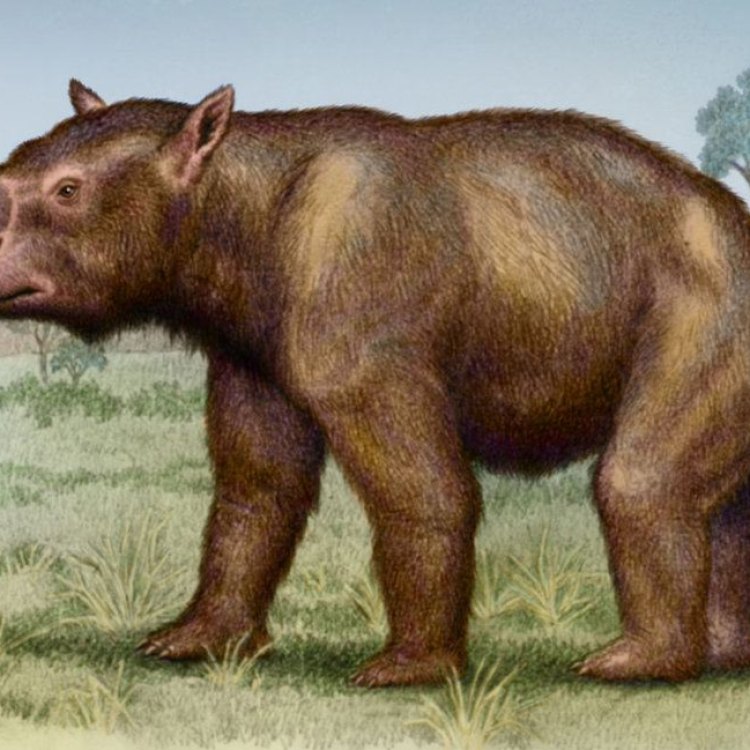
Diprotodon
- Adult Size: Large
- Average Lifespan: Unknown
- Reproduction: Sexual
- Reproductive Behavior: Unknown
- Sound or Call: Unknown
- Migration Pattern: Non-migratory
- Social Groups: Unknown
- Behavior: Solitary
- Threats: Habitat loss, climate change
- Conservation Status: Extinct
- Impact on Ecosystem: Unknown
- Human Use: None
- Distinctive Features: Large size, robust body, kangaroo-like appearance
- Interesting Facts: Diprotodon is the largest known marsupial to have ever existed.
- Predator: Extinct
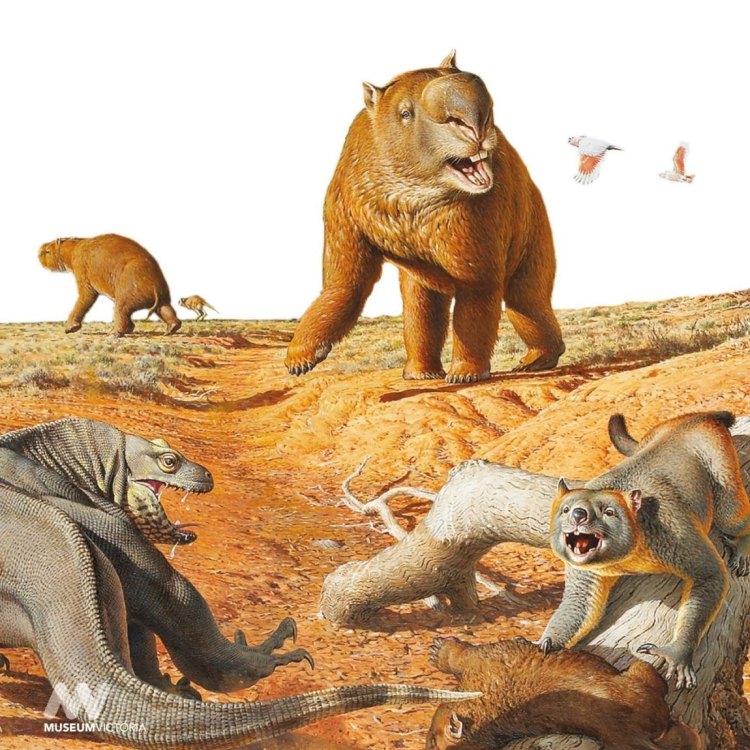
Diprotodon
The Remarkable Diprotodon: A Giant of the Past
In the vast and diverse world of prehistoric creatures, there was one that stood out above all others – the Diprotodon. This massive marsupial is a fascinating creature, known for its impressive size and unique features. Unfortunately, it is also marked as extinct, making it all the more intriguing. In this article, we will delve into the world of this giant and uncover some interesting facts about Diprotodon PeaceOfAnimals.Com.The Physical Appearance
Diprotodon was a truly unique creature, standing out among the other mammals of its time. It was known for its large size, averaging up to three meters in length and weighing up to three tonnes. This makes it the largest known marsupial to have ever existed. Its robust body and thick legs gave it a sturdy and formidable presence, much like its modern-day counterparts – the elephant and the rhinoceros.The skeletal structure of Diprotodon was also quite similar to that of the kangaroo, with its large tail acting as a balancing mechanism. Its front teeth were large and sharp, used for grazing on plants. Its powerful back legs enabled it to move quickly and efficiently, much like a kangaroo, making it an incredibly agile creature despite its size. These distinctive features have made Diprotodon a favorite among paleontologists, and its skeleton can be found in many museums around the world.
The Unknown Lifespan and Reproduction
Although Diprotodon lived during the Pleistocene epoch, which lasted from 2 Death Adder.6 million to 11,700 years ago, there is still much that is unknown about its lifespan and reproductive behavior. As it is an extinct species, it is difficult to determine these factors. However, based on the size and growth rate of its close relative, the wombat, it is estimated that Diprotodon may have lived for at least 20-25 years.As for its reproductive behavior, there is little information available. It is assumed that it followed the typical pattern of sexual reproduction, where the females would give birth to offspring, called joeys, which would then develop and grow in their mother's pouch.
The Mystery of Sound and Migration
The world of Diprotodon is also shrouded in mystery when it comes to its sound or call and migration patterns. There is still no concrete evidence of what sounds it may have made or if it even had a vocalization system. Similarly, there is no information available on its migration patterns – whether it was a migratory species or remained in one place throughout its life.The Enigma of Social Groups and Behavior
One of the most intriguing aspects of Diprotodon is its social groups and behavior. As a solitary animal, it is assumed that it lived alone and avoided contact with other individuals except during mating. However, there is also evidence that suggests it may have lived in small herds or family groups, much like its modern-day relatives. Without further evidence, the social habits and behavior of this extinct species remain a mystery.The Endangered Diprotodon
Sadly, despite its impressive size and robust body, Diprotodon was not invincible. It fell victim to the same threats that many other species face – habitat loss and climate change. Changes in the environment significantly contributed to its extinction, coupled with the presence of human beings in its habitat. As human settlements expanded, Diprotodon's natural habitat diminished, leaving it with scarce resources to survive. This further highlights the importance of preserving our ecosystems and protecting these unique creatures that once roamed the earth.The Impact on the Ecosystem
The extinction of Diprotodon has had a significant impact on the ecosystem. Being the largest herbivore in its time, it played a crucial role in maintaining the balance of its environment. Its grazing habits aided in keeping vegetation in check, which, in turn, influenced the presence and growth of other plant and animal species. With its extinction, the delicate ecosystem it was a part of was disrupted, leading to further consequences for other species.The Lost Connection to Humans
When studying prehistoric creatures, one cannot help but wonder about the connection between humans and these fascinating beings of the past. Unfortunately, in the case of Diprotodon, there is no known connection. It is speculated that it disappeared before human civilization began, or if there was any, it was minimal. This only adds to the mystery and allure of this remarkable creature.The Giant's Legacy
Despite going extinct, Diprotodon has left behind a significant legacy. Its remains have been found across Australia, with over 8,000 fossils discovered to date. These fossils have provided valuable insight into the creature's physical appearance, behavior, and the environment it once lived in. They have helped scientists and researchers piece together the puzzle of Diprotodon and learn more about the prehistoric world.The Distinctive Features
Diprotodon was a truly unique creature, with several distinctive features that set it apart from other mammals. Its large size, robust body, and kangaroo-like appearance were some of its most notable features. Even among its relatives, such as the wombat, it stood out for its sheer size and strength. Its presence would have been a sight to behold, and it is no wonder that it is a favorite among paleontologists and prehistoric enthusiasts.The Predators
Despite its imposing size, Diprotodon was not invincible. As with any other species, it had its set of predators. However, the predators that may have threatened its existence are now extinct, much like Diprotodon itself. These included the Thylacoleo, also known as the marsupial lion, the Megalania, a giant lizard, and the Wonambi, a species of huge snake.In Conclusion
The Diprotodon is a fascinating and enigmatic creature of the past, with many mysteries surrounding its existence. Despite its extinction, it continues to capture our curiosity and imagination, as we try to piece together its story. Its legacy and impact on the ecosystem serve as a reminder to protect and preserve our planet and the unique species that inhabit it. The Diprotodon may now be extinct, but its memory will live on, inspiring us to learn more about our prehistoric world and the giants that once roamed it.
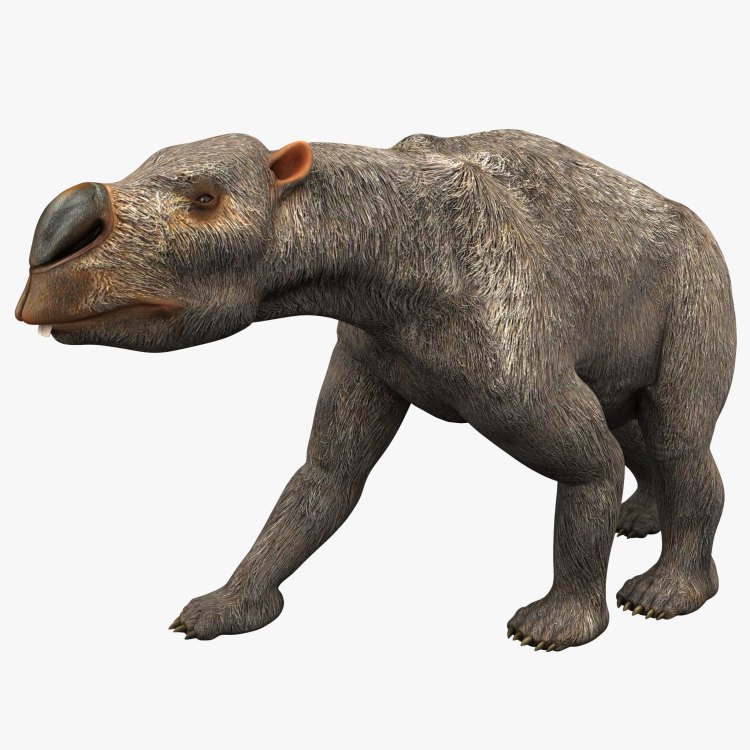
The Fascinating World of the Diprotodon: Australia's Enigmatic Giant
Disclaimer: The content provided is for informational purposes only. We cannot guarantee the accuracy of the information on this page 100%. All information provided here may change without prior notice.

